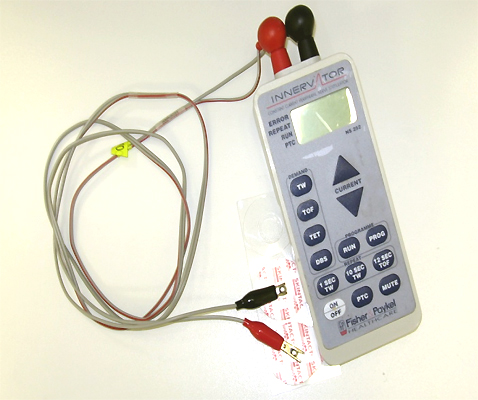Neuromuscular Monitoring
Nerve stimulators provide useful information about the depth of paralysis. These are machines that pass an electric stimulus through a peripheral nerve. They enable the degree of ‘fade’ to be assessed on a target muscle. Fade is a feature of partial non-depolarizing block, and can be detected with a train-of-four (TOF) or a double burst (DB) stimulus.
Some evidence indicating spontaneous return of neuromuscular transmission should exist before giving reversal agents. This would equate with at least two twitches after a TOF stimulus, or one twitch after a DB stimulus. Attempts to reverse with more profound paralysis may be unsuccessful.
Clinical signs can also be used to determine when reversal can be given. These might include evidence of breathing or spontaneous muscle movement.
You should continue to monitor neuromuscular function during the reversal phase. A TOF or DB ratio of 0.9 (90 %) is now considered the minimum standard to be achieved before sending the patient to the recovery room.
